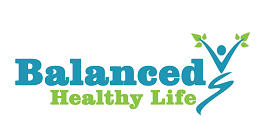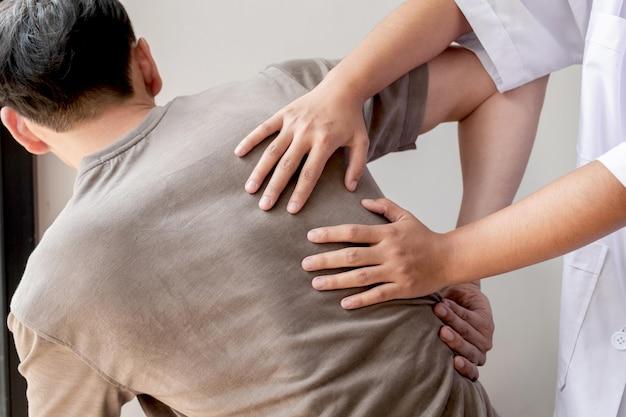Functional fitness training is composed of exercises which are designed to train and develop your muscles so that you can safely and efficiently accomplish your everyday tasks. These exercises simulate regular movements you would undertake at home, at work, or in sports involving various muscles in the upper and lower body training your muscles to work together. while emphasizing on core stability.
Functional fitness exercises can be performed at the gym or at home. Functional fitness helps you train with high-intensity workouts. High-intensity functional movements are the key to fitness, which helps to improve flexibility, enhance muscular strength and endurance. These exercises may include aerobic workout, body weight movements and weightlifting using exercise tools such as fitness balls, kettlebells and weights.
What Are the Benefits of Functional Fitness Training?
Multiple joints and muscles are used in functional exercises. Instead of moving only elbows, spine, hips, shoulders, knees, and ankles, try moving your entire body. When done correctly, this form of exercise can make everyday tasks easier, minimise the chance of injury, and enhance overall quality of life. This exercise could be particularly effective as part of a comprehensive program for older persons to promote balance, agility, and muscle strength, as well as lower the chance of falling.
What Are Functional Fitness Exercises?
Comprehensive physical movements that are found in activities involving various combinations of resistance and flexibility training can aid in the development of functional fitness. Specific functional fitness movements which use multiple joints and muscles include:
- Multi Directional lunges
- Standing row
- Squats
Are Functional Fitness Exercises for Everyone?
Before starting any new exercise regimen, consult your doctor if you haven’t exercised in a while or if you have any health concerns. Similarly, if you’re expecting a child, consult your doctor. Starting with bodyweight exercises is also a smart option. You can add more resistance, such as weights or resistance bands, as you get stronger and ready for more of a challenge. However, do not add too much resistance to workouts that require a lot of impact, as this puts joints and soft tissues at risk if they are not done correctly.
Why Should You Try Functional Fitness Training?
- Increased Balance and Stability: There are many factors in life that can cause you to lose your balance or stability. To prepare yourself for the outside world and to look confident, it is a good idea to concentrate to mitigate these factors and spend quality time in the gym. A truly fit lifestyle is not about how fit we seem, but how fit we live.
- Increased Strength: Exercises that improve your total strength are functional exercises. This is because most functional movements can help strengthen your core and enhance overall stability. Machine exercises are effective and serve great purpose for increasing muscle mass, yet to improve your strength, you should engage yourself in a workout program that targets all the stability muscles.
- Decreased Injury Risk: Functional exercises can greatly decrease the risk of everyday life injuries.
Here are a few functional exercises an individual can incorporate into their daily routine:
Functional exercises differ depending on fitness level and goals, but everyone should practise a few basic movement patterns. Below are some exercises to help you get started on those patterns. You can do them with just your body or with weights such as kettlebells, dumbbells, medicine balls, etc.
Squat
- Stand with your feet about shoulder-width apart, with your arms resting along the sides of your legs, palms facing in.
- Bend your knees and push your hips back as you lower into a squat.
- Drive through your heels to stand, squeezing your glutes at the top, for 1 rep.
Push-up
- Begin in a high plank position with your palms flat on the floor, hands shoulder-width apart, shoulders directly over wrists, legs extended behind you, and core and glutes engaged.
- Lower yourself to the floor by bending your elbows. If necessary, get down on your knees.
- For 1 rep, push through your palms to straighten your arms.
Lateral lunge
- Place your hands on your hips and stand with your feet together.
- Take a large step which is about 2 feet to the right.
- Hinge forward at the hips, push your butt back, and bend your right knee to lower into a lunge when your foot lands on the floor.
- For 1 rep, pause for a second before pushing off your right foot to stand back up.
- Rep on one side, then swap sides and repeat. If you wish, you can alternate legs.
Multi Directional lunges
- Place your hands on your hips and stand with your feet together.
- Maintain one leg in position while stepping out with the other leg to the front, back, or side until your rear knee reaches a 90-degree angle and is parallel to the floor.
- Rep on one side, then swap sides and repeat. If you wish, you can alternate legs.
Deadlift
- With a dumbbell in each hand in front of your quads, stand with your feet hip-width apart, knees slightly bent.
- Hinge forward at the hips and gently bend your knees as you push your butt back while keeping your back flat. Lower the weight slowly along your shins. The floor should be almost parallel to your torso.
- To stand up straight, keep your core tight and push through your heels. As you pull, keep the weight close to your shins.
- For 1 rep, pause at the peak and squeeze your buttocks.
Single-leg deadlift
- Hold a weight in each hand in front of your legs as you stand with your feet together.
- As you lift your right leg behind you, hinge at your hips to bring your torso parallel to the floor, and lower the weight toward the floor.
- Shift your weight to your left leg and keep your left knee slightly bent.
- Maintain a flat back. With your weight a few inches off the floor, your torso and right leg should be almost parallel to the floor.
- To stand up straight, keep your core tight and drive through your left heel.
- Return your right leg to meet your left, but attempt to keep the majority of your weight on your left foot.
- For 1 rep, pause and squeeze your butt.
- Reps are completed on one side, then switched to the other and repeated.
Medicine ball rotational throw
- Stand facing a wall a few feet to your right.
- With your feet shoulder-width apart and a medicine ball in both hands in front of you
- Bend your left knee and twist your torso to the left. Allow your arms to follow the ball.
- Throw the ball against the wall by twisting your torso to the right and swinging your arms.
- For 1 rep, catch the ball, twist to the left, and bend your left knee to absorb the ball’s force.
- Reps are completed on one side, then switched to the other and repeated.
Plank
- Place your forearms and toes in a plank position.
- Roll your shoulders back and down.
- Make sure your hips aren’t drooping or picked.
- From head to heels, your body should make a straight line.
- Hold your breath for 30 seconds up to a minute.
The Bottom Line
No matter how your fitness levels are, bodyweight exercises will make your workouts at home challenging. It is not impossible to keep your functional strength while sheltering in place. With minimal equipment, a space to work in, and some consistency, you will earn the sweat equity today. As a popular functional fitness center, experienced functional trainers teach basic techniques that help to train with confidence. Besides, they have certified trainers who are dedicated to improving your muscle strength and overall fitness. Functional training services are dynamic and focus on various muscle groups with a variety of exercises to enhance the overall performance of an individual.




